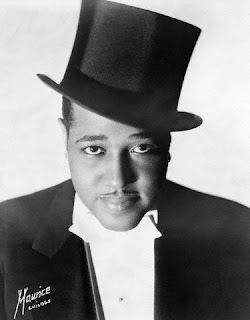- The Harlem Renaissance was a major African American cultural movement centered in the New York City neighborhood of Harlem.
- It began in the 1920s and lasted until the early 1930s.
- This was the first time mainstream publishers noticed and took seriously African American arts.
- The movement mostly concerned literature; however, it aided in the future development of African American music, theater, art, and politics.
- The movement began following a number of events in the early twentieth century. These events include the establishment of a black middle class and the Great Migration - a huge movement of hundreds of thousands of African Americans traveling from the rural South to the industrial North.
- Harlem eventually became the cultural and political center for African Americans, This was because of the movement of many "educated and socially conscious African Americans to the area" (Microsoft Student Encarta).
- There had been some artistic and cultural development of African Americans before the Renaissance in the late nineteenth century.
- A major landmark literary work was written by Claude McKay and was published by a mainstream publisher, making it one of the first African American literary works to accomplish this.
- A major event that jumpstarted the Harlem Renaissance occurred in 1924. Charles S. Johnson of the National Urban LEague hosted a dinner to introduce the new African American talent at the time (including McKay) to New York's White Literary Establishment.
- The Harlem Renaissance is not defined by any one literary or artistic style, but rather the common view and goal of those involved in the movement.
Jessie Redmon Fauset
- Jessie Redmon Fauset was born in 1882 in New Jersey and grew up in Philidelphia, Pennsylvania.
- She graduated Phi Beta Kappa from Cornell University in 1905. She was at least the first black woman to graduate from this university.
- She paved the way for future African American women to pursue their education and attend college.
- She worked closely with W.U.B. DuBois as literary editor of the NAACP magazine.
- The majority of her poetry talks about romance and racial identity.
Below are some images of famous artists of the Harlem Renaissance period, as well as some information about each.
Lois Jones
- Lois Jones attended the School of the Museum of Fine Art in Boston, MA. She attended school here during a time of great racial prejudice and tension.
- Jones, despite the issues of the racial relations issues of the society in which she lived, was very driven to pursue her art career. Her love for art greatly surpassed the influence of any outside issues of the world.
- Jones sometimes entered her own paintings into exhibitions that did not accept work from African Americans. She avoided this problem by having her white friends deliver her work for her.
- Even though she managed to enter her work into these exhibitions, she still faced a problem: the prize. When a prize was awarded to her, it was taken away and given to a white competitor when it was discovered that she was black.
- Lois Jones was driven to use her talent, time, and energy for positive things. She was beyond these ridiculous racial boundaries of the time, and she was not going to let the color of her skin ruin her love and passion for art.
Duke Ellington
Duke Ellington was born to a middle class family in Washington, D.C.
He started playing piano at the age of seven. His passion for the arts was fueled since an early age.
He received a scholarship to Pratt Institute in Brooklyn, New York; however, he declined the offer. Instead, he began playing in Broadway nightclubs.
Ellington put together a band and began playing at the Cotton Club. This lasted from 1922 to 1931.
Ellington gained major national exposure from playing here, thanks to the radio shows broadcasting from the club.




No comments:
Post a Comment